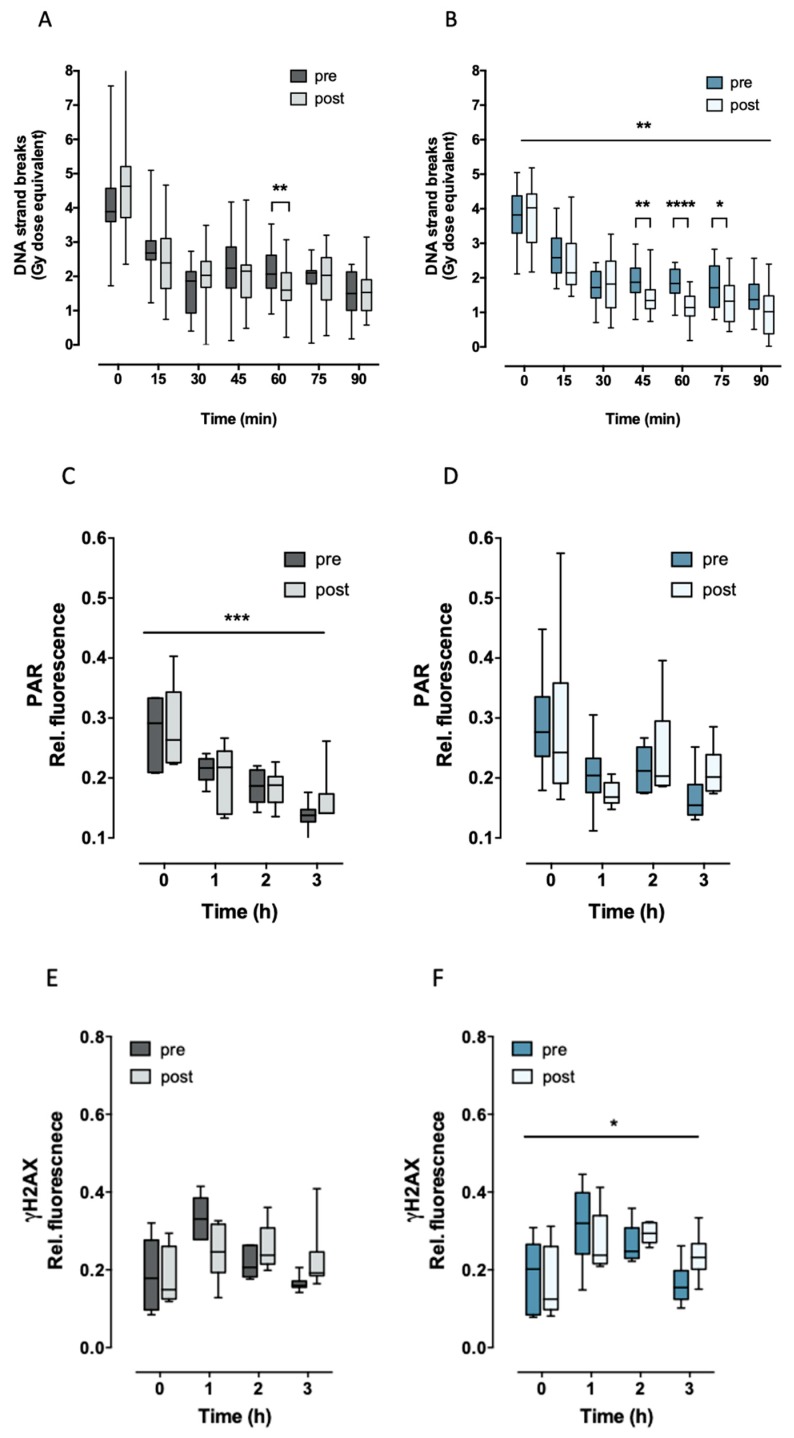Figure 2.
Radiation-induced DNA strand breaks (A,B), PARP1 activity (C,D), and γH2AX (E,F) were measured in PBMCs from trained (blue) and untrained (grey) individuals before (pre) and after (post) exhaustive exercise. PBMCs were irradiated on ice ex vivo with X-ray at a dose of 3.7 Gy (time point = 0 h) and thereafter incubated at 37 °C for the indicated time periods. Statistical significance was calculated by ANOVA samples matched by two factors (* p < 0.05). A,B: DNA repair kinetic was significantly different in trained individuals after workout (** p = 0.008). Sidak’s multiple comparisons test (post hoc test) showed significant differences between pre- and postworkout in untrained (repair time 60 min) and in trained individuals (repair times 45–75 min). C,D: PAR (pre and post) significantly decreased after radiation in untrained * p = 0.0004 but not in trained individuals). E,F: No significant difference was detected in γH2AX in untrained subjects when comparing pre- and postworkout, whereas trained individuals’ responses were significantly different after exhaustive exercise (training x workout interaction * p = 0.0269). Rel. fluorescence signal of PAR and γH2AX represent the mean fluorescence relative to fluorescence background. For γH2AX and PAR, 12 missing values in a total of 120 were replaced using the median of the corresponding values. Fifteen trained and 15 untrained subjects were analyzed for DNA strand breaks (DNA SB). Six trained and six untrained subjects were analyzed for PAR and six trained and six untrained subjects were analyzed for γH2AX. * p ≤ 0.05; ** p ≤ 0.01; *** p ≤ 0.001; **** p ≤ 0.0001.

